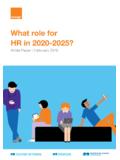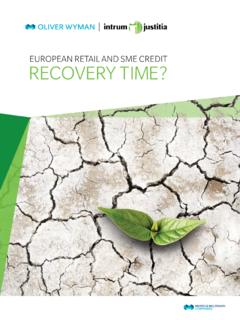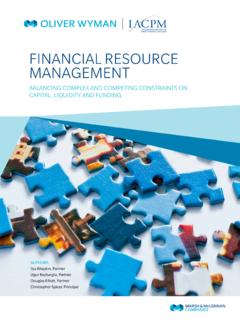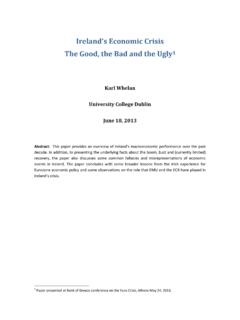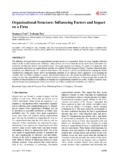Transcription of Airline Economic Analysis 2015-2016 - Oliver Wyman
1 Airline Economic . Analysis . FOR THE RAYMOND JAMES GLOBAL Airline BOOK. 2015 2016. AUTHORS. Tom Stalnaker, Partner Khalid Usman, Vice President Aaron Taylor, Senior Manager CONTENTS. US CARRIERS INCLUDED AND METHODOLOGY 4. INTRODUCTION AND EXECUTIVE SUMMARY 6. PROFIT/MARGIN 9. 1. Margin Growth 9. 2. Unit Profitability 10. 3. Individual Airline Profitability 12. 4. Operating Profit Trend; Break even Load Factors 14. REVENUE 19. 5. Airline Revenue vs. GDP 19. 6. Change in Operating Revenue 20. 7. Revenue Driver: US Carrier Capacity 22. 8. Revenue Driver: Load Factor 24. 9. Revenue Driver: Passenger Yield 27. 10. Revenue Driver: Cargo 29. 11. Revenue Driver: Ancillary Revenue 30. 12. Unit Revenue Changes 31. 13. Comparison of Domestic RASM 32. Copyright 2015-2016 Oliver Wyman 2. COST 35. 14. Decline in Airline Costs 35. 15. Cost Driver: Labor 38. 16. Cost Driver: Fuel 39. 17. Fuel Cost Variance Analysis 40. 18. Other Cost Drivers 41. 19. Unit Cost Trend and Gap 42.
2 20. Domestic Airline Cost Performance 43. 21. US Narrow-body Aircraft Direct Casms 47. WORLD CAPACITY 51. 22. World Capacity Trends 51. 23. World Air Travel Growth Indicators 53. 24. Capacity Analysis : Asia/Oceania 54. 25. Capacity Analysis : North America 56. 26. Capacity Analysis : Europe 58. 27. Capacity Analysis : Africa/Middle East 60. 28. Capacity Analysis : Latin America/Caribbean 62. 29. US Carrier International Revenue 64. 30. Stage-length Adjusted RASK/CASK for International Carriers 66. Copyright 2015-2016 Oliver Wyman 3. US CARRIERS INCLUDED. AND METHODOLOGY. All US value carriers and network carriers are included in this Our set of value carriers (low-cost): 1. Allegiant 2. Frontier 3. JetBlue 4. Southwest (including AirTran). 5. Spirit 6. Virgin America Our set of network carriers: 7. Alaska 8. American (including US Airways and America West). 9. Delta (including Northwest). 10. Hawaiian 11. United (including Continental). We have divided airlines into two broad groups network carriers and value carriers recognizing that each group includes airlines with a range of business models.
3 Especially within the value carrier grouping, there is a divide between more traditional value carriers and those with lower revenue and costs that are increasingly referred to as ultra low-cost carriers. However, over the past several years, the ability to divide US airlines into these categories has become more difficult. The lines that once divided the carriers continue to blur with structural changes to both groups. This year, both the domestic cost gap and revenue gap narrowed between the two groups. Value carriers continue to expand their networks by adding domestic services and growing their international operations. 1 The primary category excluded is regional carriers, which provide most of their capacity under capacity purchase agreements (CPAs). Regional carriers operated about 12% of domestic ASMs in 2014 and have different expense payment arrangements in the CPAs with their mainline partners. The number of expense categories paid directly by mainlines and not appearing in the regional carriers'.
4 Costs has increased over time. Fuel and aircraft ownership were among the first to be directly paid in some CPAs; more recently, some mainlines have taken over payment for ground handling and engine maintenance. As a result, comparing total CASM across regional carriers and aircraft may be misleading. Copyright 2015-2016 Oliver Wyman 4. Recognizing that many historical structural differences between carrier groupings have converged, we still believe our traditional groupings remain valid. If recent trends continue, however, the industry will be redefined, with carriers switching groups or new groupings altogether. Additionally, as in past years, this report focuses largely on US carriers based on the regulatory data that is available. In the World Capacity section, we have expanded sections by geographic region as well as analyses around US carrier international share and a revenue/cost by available seat kilometer (RASK/CASK) Analysis for non US carriers.
5 Throughout the report, annual GDP estimates from the International Monetary Fund are a proxy for full-year values, and our Analysis uses nominal GDP references. Copyright 2015-2016 Oliver Wyman 5. INTRODUCTION AND. EXECUTIVE SUMMARY. Thanks to cost reductions led by the decline of energy prices, industry consolidation, and capacity discipline, the US Airline industry is enjoying a 15-year high in operating margins a healthy margin for most industries, but particularly for airlines , which have struggled in years past to turn a profit at all. Even more impressive, margins remained strong despite recent revenue challenges. During second quarter 2015, margins for network and value carriers increased points and points, respectively, compared with the same period in 2014. These margin increases came at a time of declining revenue and yields, reflecting a combination of a favorable cost environment and skilled Airline management. In last year's Airline Economic Analysis , we wondered about clouds on the horizon, and the discussion of industry capacity growth compared with Economic expansion (gross domestic product growth) was, and remains, top of mind for most industry observers.
6 Unsurprisingly, the recent yield declines appear to coincide with creeping capacity growth for US carriers systemwide, but particularly in the domestic market. Recent capacity growth in the domestic markets, once significantly slower than Economic growth forecasts, is now closer to growth estimates for gross domestic product (GDP). The recent decline in Airline yields, from a peak in second quarter 2014, coincides with a slight relaxation of recent capacity restraint in the industry. Historically, the industry has seen a high correlation between industry demand and nominal GDP growth, and recent years has seen strong industry focus on constraining capacity at or below the growth of GDP. However, in the last 12 months, capacity growth in ASMs (available seat miles) has exceeded GDP growth on a system and US domestic basis. The IMF estimates North American GDP. growth for 2015 at percent. In 2015, US domestic capacity has increased percent for value carriers and percent for network carriers, with overall ASM growth for the domestic market at percent.
7 The increased capacity, combined with significant fare competition in the US domestic market, has resulted in softening yields. Systemwide passenger yield declined percent during second quarter 2015, compared with the same period a year earlier. The drop continues a trend emerging after a five-year period of yield growth, from mid-2009 to mid-2014. Revenue also peaked in mid-2014. before turning down. Network carrier systemwide revenue per available seat mile declined percent during second quarter 2015. Value carriers dropped percent during the same period. Copyright 2015-2016 Oliver Wyman 6. Ancillary revenue continues to be an important revenue stream for the airlines , led by miscellaneous revenue including priority boarding and in-flight entertainment. Bag fees, now charged by all carriers, are a close second. Despite revenue challenges, the airlines have sustained and even grown profit margins, aided by unit cost declines outpacing unit revenue declines.
8 The cost declines are driven not only by lower fuel prices, but also by non-fuel unit cost decreases. US Airline costs declined percent year-over-year to cents per available seat mile in second quarter 2015, marking the largest overall cost decline since 2009. Fuel prices, of course, drove the decline, but other costs also dropped, such as aircraft ownership and maintenance costs. Labor, rather than fuel, is now the largest cost for airlines , increasing for all carriers except Delta. This represents a return to the days before fuel spikes, as labor costs have historically been the highest cost category for airlines . Finally and a significant continuing trend from last year's report an increase in ASMs, driven by greater seat density in airplanes, has contributed to the reduction in unit costs. airlines have become better at matching capacity to consumer demand during the past decade, maintaining high load factors in both peak and off-peak times. Record load factors in the past two years are largely the result of airlines stimulating off-peak demand and maintaining or reducing unnecessary off peak capacity.
9 For network carriers' domestic operations, the seasonal high load factors have remained virtually unchanged since 2009, while off-peak lows have increased by nearly 6 points. Around the world, Airline capacity is growing faster than the economy. Capacity, measured in available seat miles, increased percent worldwide; every major world region experienced ASM growth at or above percent. All regions exceeded their respective GDP forecasts. The highest growth regions were Africa/Middle East at percent ASM growth and Asia/. Oceania at percent growth. North America and Latin America had the lowest ASM growth yet exceeded GDP estimates. Whether the world's economies can sustain these growth levels is certainly debatable. In closing, the Airline industry's ability to maintain healthy profits despite competition is encouraging. But questions remain: Will the profits outlast the low fuel cycle? Will a renewed focus on customers affect the industry's costs? Will carriers succumb to the temptation to flood the market with capacity that is unsustainable, given Economic growth estimates?
10 Will weakness currently masked by low energy prices be exposed? Copyright 2015-2016 Oliver Wyman 7. PROFIT/MARGIN. PROFIT/MARGIN. 1. MARGIN GROWTH. Strengthening passenger yields over the past few years, combined with rapidly falling fuel prices, have resulted in record profits. Operating margins are above 15% for both US. network and value airlines . While recent results are encouraging for the airlines , since 2000, US network and value carriers have collectively produced a operating loss. For the past 10 years, operating margins at US value airlines have stagnated at or below 10%. Thanks to the upturn starting in mid-2014, their margins continued to increase and peaked at during second quarter 2015. Meanwhile, network carriers returned to modest profitability during the last half of 2013 and similarly peaked during the same period at Exhibit 1: System Long term Operating Margin Trend, Q1 2000 Q2 2015. 30%. 20%. 10%. 0%. -10%. -20% Value -30% Network -40% All 2000 2001 2002 2003 2004 2005 2006 2007 2008 2009 2010 2011 2012 2013 2014 2015.




